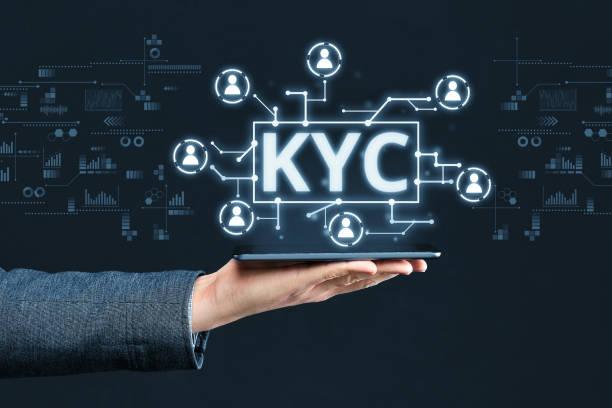The term “Know Your Customer,” or simply “KYC,” refers to a common verification procedure used by financial firms, investment companies, the healthcare industry, and many other sectors. A company can evaluate who its customers are and the level of danger they pose by using KYC authentication which is a part of Anti Money Laundering (AML). The optimal method for preventing fraud and reducing risk is to combine AML and KYC verification.
To put it briefly, KYC authentication is the process of figuring out who business clients are, what activities they engage in, and determining if the origin of their cash is legitimate. In contrast, AML screening entails a background check in which consumers are checked against international sanctions and watch lists for illegal activity. Businesses benefit from AML and KYC procedures in many different ways.
What Constitutes the KYC Authentication Procedure?
Despite the fact that the KYC process fluctuates between jurisdictions and business sectors, several phases included in it consist of
- Customer Identification
A corporation must identify its clients during the first phase of onboarding. The end-users must provide their proper ID documents and data is automatically extracted from the submitted documents using OCR (Optical Character Recognition) software. After that, the client may be asked to present a selfie that verifies the picture on the identity document. The client is ready to proceed once the provided data has indeed been cross-matched.
- Customer Due Diligence
The execution of all relevant Customer Due Diligence (CDD) steps is a key requirement of KYC banking. The degree of CDD is based on the level of risk associated with the clients. For instance, consumers who represent minimal to no risks are subject to streamlined due diligence. On the other hand, high-risk clients are subject to Enhanced Due Diligence (EDD), which requires the end-users to submit additional documentation. These documents may include identification, employment verification, and address proof.
- Ongoing Monitoring
A single customer verification during the first registration stage is insufficient. KYC and AML validation is carried out continuously to reduce the risk of fraud. An improved risk evaluation is made by a continuous verification process. Events that can cause KYC solutions to be triggered include a rapid increase in transactions, negative media coverage of fraud, unusual transfers to offshore bank accounts, and much more.
Why is KYC Authentication a Necessity in the Digital Age?
Know your customer is an authentication process that was once solely required for financial organizations, but it has grown in importance for other industries as well due to its effectiveness in preventing fraud. The use of KYC/AML procedures allows for the upkeep of an accurate user record. This is especially important since client transactions might be used as proof in the event that a business is implicated in a financial crime.
Additionally, a risk-based approach is implemented using the same procedures. Due to the ability to assign consumers a risk rating, businesses are able to adhere to international KYC laws.
Importance of KYC for Companies
The benefits of KYC compliance online for enterprises are innumerable. First, the deployment of digital identity verification technologies is typically used to ensure KYC compliance. These products use AI algorithms to carry out thorough customer analysis. Secondly, due to automation, the biometric identification procedure is finished very quickly. Thirdly, there is a lower risk of error when manual processes are substituted by automation. The utmost level of accuracy is thus offered for the verification results. Last but not least, AML and client KYC verification are required for conformity as non-compliance can result in significant fines in addition to multiple lawsuits.
Importance of KYC for Clients
Although the KYC procedure may seem burdensome, the reality suggests the opposite. The KYC verification procedure is totally automated and is finished at the beginning of the account opening or registration process. A culture of trust and transparency is fostered when customers use the resources of a company that is KYC compliant. Clients will know that the business is doing all possible to protect their money, which creates a favourable impression. As a result, there are fewer drop-off rates and more client registrations in a firm.
Final Thoughts
In order to comply with AML and KYC regulations, financial institutions like banks, stock markets, and FinTechs are progressively spending on identity verification technologies. Maintaining compliance with the laws enables the business to reduce the danger of fraud while also building a solid brand image. The usage of RegTech products that make use of AI (Artificial Intelligence) technology in KYC authentication is now essential for multinational firms as financial frauds are on the rise in every country.











